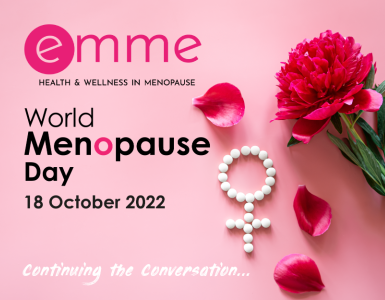Many women struggle with the unpleasant symptoms of menopause, such as hot flushes, mood swings, vaginal dryness, dry skin, and night sweats. As a result, they begin exploring their options, and often want to try hormone replacement therapy (HRT) on the advice of their GP or specialist.
But is HRT safe, and is it right for everyone? Read ahead to learn more about this common medical treatment for menopause.
What is Hormone Replacement Therapy (HRT)?
Hormone Replacement Therapy aims to ‘replace’ the hormones that a woman’s body no longer produces as she approaches menopause, and for the rest of her life afterward. The ovaries produce two main hormones: oestrogen and progesterone. When these are in short supply, a woman can experience symptoms that negatively affect her life.
Oestrogen has many functions in the body, including helping to build the lining of the womb during the menstrual cycle. Progesterone helps to facilitate the fertilisation of the egg, and helps a woman maintain a healthy pregnancy. As the menstrual cycle and fertile years come to an end, the body stops producing as much of these hormones.
HRT aims to ease these negative symptoms by introducing both or one of these hormones back into the body. Combined HRT involves taking oestrogen and progestogen (a synthetic version of progesterone), or oestrogen-only HRT.
Is Hormone Replacement Therapy safe?
It is not as simple as describing HRT as ‘safe’ or ‘unsafe.’ As with any medical treatment, what is right for one person might not be safe or effective for another. The positive (and negative) effects of HRT depend on the types of hormone include, the format it which it is taken (i.e. patches, pessaries, pills, etc.), and the dosage.
Other factors can include BMI (body mass index), overall health, and personal medical history, as well as allergies and intolerances. Of course, a woman’s own experiences of her menopause will also affect the best treatment options – what is intolerable varies greatly from person to person. For some, the benefits might outweigh the negatives, while for others, even mild side effects might be too much to handle.
Broadly speaking, the medical community agrees that the oestrogen in HRT is helpful for treating menopausal symptoms. In peer-reviewed studies, none of the more common alternatives (including SSRI antidepressants, diet, exercise, herbal remedies, and bioidentical or “natural” plant-derived hormones) have been shown to work as well as HRT.
In addition to safely managing the symptoms of menopause, HRT has been shown to assist in bone health, reduce the risk of fractures, and prevent osteoporosis. It has also been shown to reduce the risk of bowel cancer.
In the past, there has been an incorrect belief that HRT improves cardiovascular health. However, the Women’s Health Initiative (WHI) conducted trials in the US to study cardiovascular risk. Over the course of 15 years, this study has found little to no evidence that this is the case. In fact, it seems that HRT could cause an increased risk of stroke and blood clots. This increased risks stops when a woman stops HRT.
The UK’s Million Women Study (MWS) also showed that HRT is associated with an elevated risk of breast cancer and ovarian cancer.
Oestrogen-only vs. Combined Therapy
Depending on your concerns and health needs, your GP will prescribe either oestrogen-only or combined HRT.[5]
- Oestrogen-only HRT – The three main forms of oestrogen used in HRT are stradiol, estrone and estriol. Oestrogen-only HRT is better for women who have had a hysterectomy, because it may slightly raise the risk of ovarian or womb cancers when used without progesterone/progestogen.
- Combined HRT – This form of HRT combines oestrogen with the progestogen. It is preferred for women who still have their womb, as the progesterone protects against the very small increased risk of womb cancer. You can either take it with gaps over time, or as a continuous treatment (recommended if you are post-menopause).
Which type of HRT is right for your needs?
HRT treatments are available in a variety of forms, including pessaries, patches, gels, and tablets. Choosing how you take your HRT is a mixture of personal preference and your GP’s expert opinion. Here are some of the most common options:
- Skin patches – These are attached to the skin and replaced every few days. You can get both combined HRT and oestrogen only skin patches. This is best for women with a history of blood sclot, heart or liver problems, and/or diabetes.
- Tablets – Tablets are the most common ways to take either combined or oestrogen-only HRT. However, if you have a history of liver disease, heart disease, or stroke, you should avoid the tablet-form of HRT, as it slightly elevates the low risk.
- Oestrogen gel – Gels are a popular way to apply HRT, which then absorbs into the skin. This is good for women who do not want to apply patches to their skin. Gel is also suitable for those who have a history of blood clots, diabetes, and heart problems, as gel HRT has been shown to have fewer risks in these cases.
- Vaginal oestrogen – Vaginal oestrogen is introduced into the body in the form of a cream, pessary or ring, placed high in the vagina. It is ideal for relieving vaginal dryness, and can prevent painful intercourse. However, vaginal oestrogen will not ease hot flushes or night sweats; it only affects the local area, so will not affect the rest of the body. This is a very safe HRT method, and can be taken progestogen, even for women who still have their womb.
Can Testosterone be a part of HRT?
While many people think of testosterone as a purely male hormone, it is actually produced by women as well, and is an important part of sexual and physical wellbeing.[6] Taking testosterone can help to improve sex drive, mental health, overall energy levels, and vitality. It is usually prescribed in very low doses, and is applied as a gel on the skin.
Hormone Replacement Therapy Side Effects
As with any treatment pathway, HRT does come with some associated side effects.[7] These are typically mild, and pass after the first few months of regular use. Some of these common side effects include:
- Bloating
- Breast tenderness
- Leg cramps
- Nausea
- Irritability
- Depression and anxiety
If you experience any of these side effects, you can speak with your GP about changing your dosage of oestrogen or progesterone, or changing to a different form of the treatment.
Another common side effect of continuous combined HRT or Tibolone is spotting and irregular bleeding for the first 4 to 6 months of treatment. This is normally not a cause for concern, but should always be shared with your GP. If you start to experience heavy bleeding at any point, you should seek immediate medical guidance.
The final verdict on HRT?
When it comes to HRT, there is no ‘one size fits all’ solution. Every woman has different symptoms, and different forms of HRT will work better for them – your individual health needs should determine your treatment pathway. This is a decision for you and your GP.
















